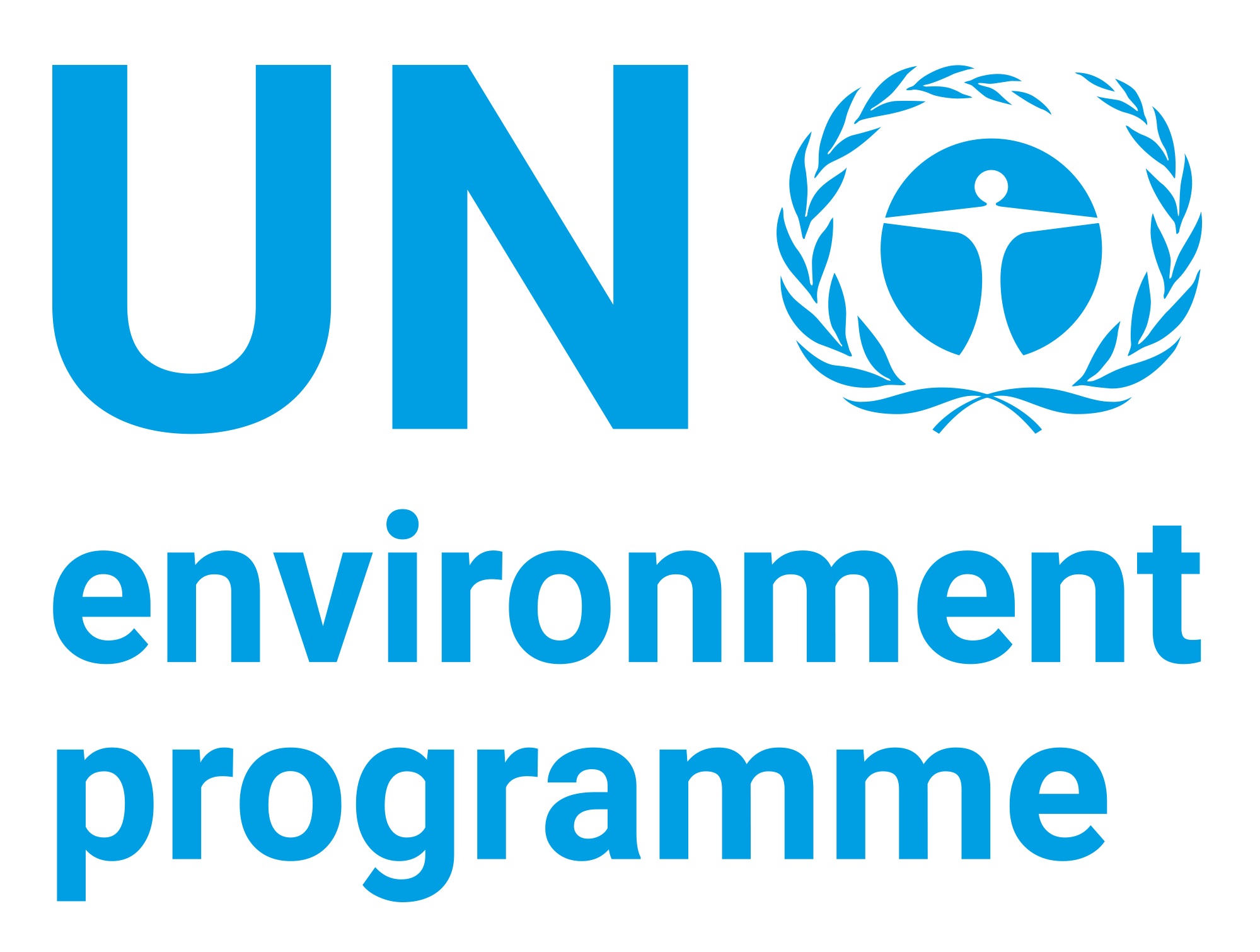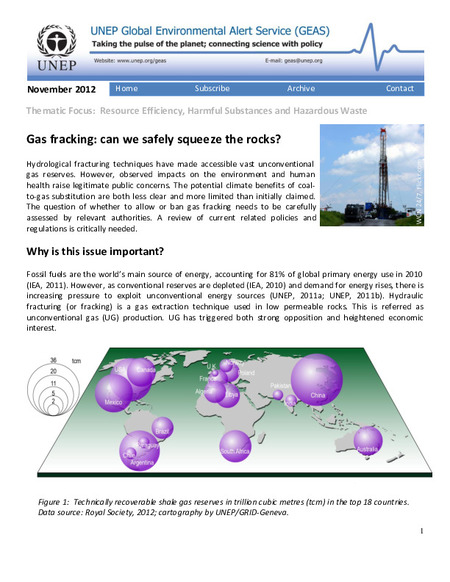| dc.contributor | Science Division | en_US |
| dc.contributor.author | United Nations Environment Programme | en_US |
| dc.date.accessioned | 2022-10-24T07:00:54Z | |
| dc.date.available | 2022-10-24T07:00:54Z | |
| dc.date.issued | 2012-11 | |
| dc.identifier.uri | https://wedocs.unep.org/20.500.11822/40939 | |
| dc.description | Hydrological fracturing techniques have made accessible vast unconventional gas reserves. However, observed impacts on the environment and human health raise legitimate public concerns. The potential climate benefits of coal-to-gas substitution are both less clear and more limited than initially claimed. The question of whether to allow or ban gas fracking needs to be carefully assessed by relevant authorities. A review of current related policies and regulations is critically needed. | en_US |
| dc.format | Text | en_US |
| dc.language | English | en_US |
| dc.relation.ispartof | UNEP Global Environmental Alert Service (GEAS) | en_US |
| dc.rights | Public | en_US |
| dc.subject | hazardous waste | en_US |
| dc.subject | hydraulic structure | en_US |
| dc.subject | human health | en_US |
| dc.title | Gas Fracking: Can We Safely Squeeze the Rocks? - UNEP Global Environmental Alert Service (GEAS) November 2012 | en_US |


